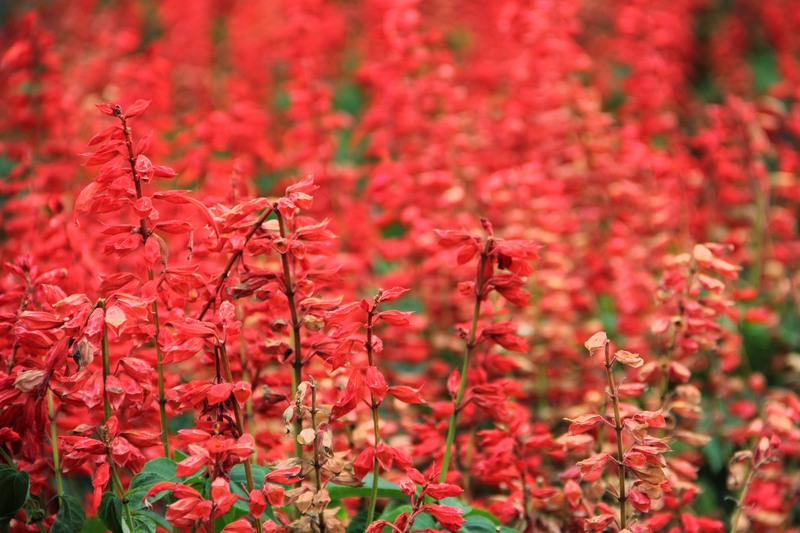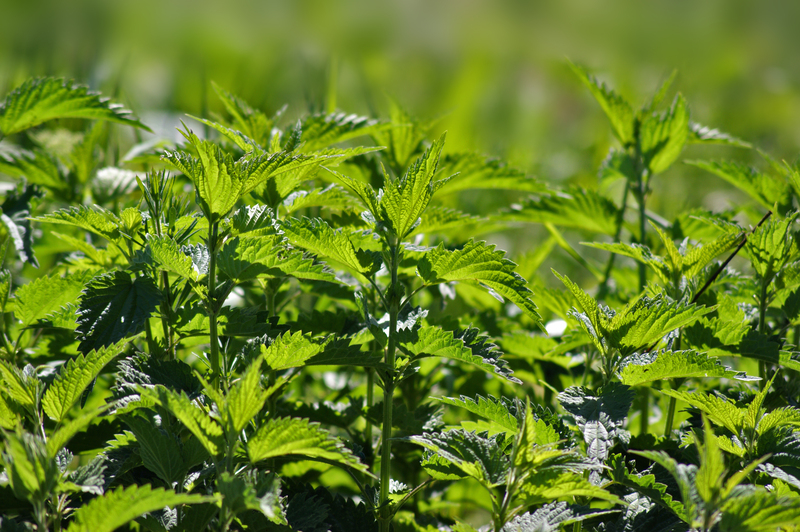How to Design a Learning and Play Garden for Children
Posted on 10/09/2025
How to Design a Learning and Play Garden for Children
Creating a learning and play garden for children is a rewarding project that fosters curiosity, creativity, and a love for the natural world. A well-designed children's garden blends hands-on learning with play, encouraging exploration and discovery in a safe, engaging environment. Below, we provide a comprehensive guide to creating an educational and playful outdoor space that nurtures child development, supports physical activity, and inspires lifelong skills.

Why Create a Learning and Play Garden?
A children's learning garden offers endless benefits. It isn't just about growing plants--it's about cultivating imagination, responsibility, problem-solving, and sensory development. By integrating play, you empower children to develop social skills, coordination, and an understanding of the world around them. According to educational experts, gardens designed for children can:
- Stimulate the senses through colors, textures, sounds, and smells.
- Promote physical activity, improving strength, balance, and agility.
- Encourage teamwork and cooperation with shared gardening activities and group play.
- Boost scientific literacy by observing plant life cycles, weather patterns, and ecosystems.
- Cultivate environmental stewardship, teaching kids to care for plants and wildlife.
Key Elements of a Children's Learning and Play Garden
Designing a playful learning garden requires careful planning to ensure children's safety, engagement, and enjoyment. Here are the essential features to consider:
1. Safety First
- Supervision: Ensure the garden is visible and accessible for adult supervision at all times.
- Pesticide-Free: Use organic, non-toxic practices to protect children from harmful chemicals.
- Safe Boundaries: Install fencing or natural barriers to prevent wandering, especially for younger kids.
- Non-Toxic Plants: Choose child-safe, non-toxic plant species (avoid foxgloves, nightshade, etc.).
- Soft Surfaces: Use mulched, grassy, or sanded areas to cushion falls.
2. Accessible Design
- Wide, stable pathways for strollers and wheelchairs.
- Raised beds that accommodate all abilities and minimize bending.
- Clear signage, using both images and words to guide children.
3. Spaces for Active Play
- Open lawns for running, ball games, and group activities.
- Climbing structures like logs, stepping stones, or natural boulders.
- Sensory trails with different textures--pebbles, bark, sand, and water.
- Nature-inspired play equipment such as willow domes, tunnels, or forts.
4. Areas for Quiet Learning and Reflection
- Story corners with benches or outdoor seating for reading and storytelling.
- Observation points for birdwatching, insect viewing, or studying water features like a small pond.
- Art spaces with easels or chalkboards for creative expression.
5. Themed Planting Beds
- Sensory gardens with aromatic herbs (lavender, mint), tactile grasses, and colorful blooms.
- Edible gardens where children can plant and pick vegetables, fruits, or herbs.
- Pollinator patches to support bees, butterflies, and learning about ecosystems.
- Wildlife habitats with birdhouses, bug hotels, and log piles.
Planning Your Children's Learning and Play Garden
Step 1: Assess Your Space
Start with a thorough evaluation of your outdoor area. Measure the available space and note sunlight, shade, water access, and existing features (trees, fences, slopes). Map out zones for different garden functions:
- Play area: Open and visible for group games.
- Learning beds: Easily reachable, near water for watering ease.
- Quiet nooks: Under trees, near flower beds, or with views of wildlife.
Step 2: Involve Children in the Design Process
Engage children from the beginning! Ask about their favorite colors, scents, or activities in nature. Let them help with plant selection, garden themes, and even pathway shapes. When children have ownership, they become invested in learning and taking care of their garden.
Step 3: Select Suitable Plants and Materials
- Choose a mix of perennials and annuals--flowers for pollinators, vegetables, herbs, and fast-growing sunflowers or peas for quick results.
- Add sensory plants such as lamb's ear for touch, nasturtiums for taste, or lemon balm for smell.
- Use durable, safe materials for raised beds, paths, play features, and signage.
- Incorporate natural elements: logs for seating, rock circles, willow arches, or driftwood for play.
Step 4: Design for All Seasons
A children's learning and play garden should be inviting year-round. Plant spring bulbs for early blooms, summer annuals and perennials for color, autumn foliage trees, and winter evergreens. Include features like bird feeders, wind chimes, or water bowls for wildlife interest even in quieter garden months.
Step 5: Plan for Maintenance and Growth
- Keep beds small so children can reach and tend easily.
- Mulch pathways to reduce weeds and prevent mud.
- Install simple watering solutions such as rain barrels, watering cans, or automatic drip hoses.
- Schedule regular group gardening days to keep the area well-tended and foster community.
Fun Features to Include in a Learning and Play Garden
- Mud kitchens: Set up a dedicated zone with old pots, pans, and utensils for pretend cooking with soil and water.
- Discovery tables: Use tables or logs for sorting leaves, rocks, insects, and natural treasures.
- Music walls: Attach pots, pans, pipes, or wood for kids to explore rhythm and sound outdoors.
- Maze gardens: Create a simple labyrinth or winding path among tall sunflowers or grasses.
- Vertical gardens: Grow edible or flowering plants in recycled bottles or pallets to maximize small spaces.
- Butterfly puddling patches: Shallow saucers with water and pebbles attract butterflies for observation and learning.
Encourage Sustainability and Stewardship
Teach children about the cycle of life in the garden: composting food scraps, saving rainwater, and planting native species. Use signage to explain eco-friendly practices like mulching, recycling, and natural pest control. Involving kids develops respect for their environment and healthy habits for life.
Lesson Ideas for a Learning and Play Garden
A garden is a natural classroom! Here are a few creative activities for your children's educational garden:
- Plant life cycle experiments: Grow seeds in clear containers to observe roots and shoots. Chart plant growth over time.
- Insect safaris: Hunt for worms, ladybirds, or bees--draw what you see and discuss their roles in the ecosystem.
- Garden math: Count petals, measure plant height, or use scales to weigh vegetables.
- Storytelling and journaling: Use outdoor notebooks or chalkboards to write garden stories or draw what's in bloom each week.
- Create a wildlife log: Record birds, butterflies, and other wildlife visiting the garden. Make simple feeders or bug hotels to attract them.
Adapting for All Ages and Abilities
A truly inclusive play and learning garden for children is accessible and engaging for everyone, regardless of ability. Consider these adaptations:
- Raised beds for children who use wheelchairs or have limited mobility.
- Wide, firm paths for easy navigation.
- Water tables and pots at child height for sensory play.
- Signage in braille or with tactile elements for visually impaired children.
- Wind chimes, textured surfaces, or aromatic plants for multi-sensory engagement.
Tips for Success
- Start small: Begin with a few beds or features; expand as interests grow.
- Make it fun: Blend games, competitions, and creative arts into gardening activities.
- Be patient: Gardens take time to establish. Celebrate every little sprout and bloom!
- Involve the community: Invite neighbors, schools, or clubs to support and participate.
- Document progress: Take photos and keep a garden journal to record your journey.
Common Mistakes to Avoid
- Overcrowding beds: Leave plenty of room for plants to grow and children to move.
- Ignoring safety: Always check plant safety, play equipment, and surfaces regularly.
- Choosing hard-to-grow plants: Select robust, low-maintenance species suited to your climate.
- Underestimating maintenance: Keep tasks simple and manageable for young gardeners.
- Neglecting shade and shelter: Provide cover and hydration, especially in hot weather.

Inspirational Examples of Learning and Play Gardens
1. School Sensory Gardens
Many schools are now integrating outdoor play and learning gardens with raised sensory beds, butterfly patches, and art corners. Students participate in planting, caring, and harvesting, connecting curriculum with hands-on experience.
2. Community Nature Playgrounds
Urban areas are transforming parks into multi-use nature play gardens for children, featuring log climbing frames, discovery trails, edible beds, and outdoor classrooms.
3. Backyard Learning Oases
Families can create home-based mini-gardens with simple play features, water stations, and storytelling corners--proving that even a small space can be a powerful classroom.
Conclusion: Cultivating Young Minds Through Gardens
Designing a learning and play garden for children is an investment in their physical health, intellectual growth, and emotional well-being. With thoughtful design, safe features, inclusive spaces, and engaging activities, your garden can evolve into a much-loved destination for play, learning, and discovery.
Whether you're working with a schoolyard, community plot, or backyard, remember that the most important ingredient is joy. Let children's questions, laughter, and imagination bloom alongside the plants. Your garden will not only grow healthy food and flowers but also resilient, curious, and environmentally conscious future leaders.
Ready to start your children's learning and play garden? Gather your seeds, sketch your design, and begin digging--you'll soon see kids and nature flourish together!

